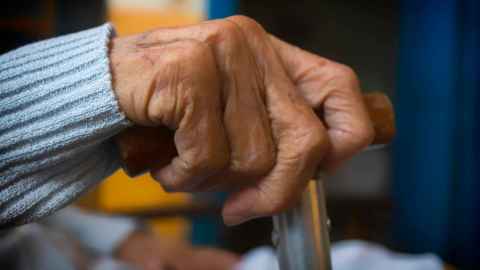Using big data analytics and AI to help NZ prepare for an ageing population
23 June 2020
Opinion: Motion sensors could be used to detect changes in elderly individuals’ home behaviour and help alert and guide caregivers, say Julia Kotlarsky and Ilan Oshri.

According to Statistics NZ, it is projected that about one in 4.5 New Zealanders will be 65 years old or older by 2036. The big question is how New Zealand can find a way to improve the quality of life and ensure quality medical care for the elderly, without compromising on the needs of the younger generation.
The growing number of retirement homes and villages in New Zealand seem to be very well positioned to try non-invasive technologies, using data analytics to improve efficiency of the care offered to the elderly, and to focus on preventive, rather than reactive mode of the care using big data analytics and artificial intelligence (AI) technologies.
Our ongoing research project on big data analytics and the use of AI algorithms brought our attention to an interesting approach that is being tested in by the SMU-TCS iCity Lab in Singapore and could be a model for New Zealand. It has begun a project experimenting with technologies to address the needs of its senior citizens living alone. This could be a first step towards using big data and analytics to prepare for the ageing populating without compromising the resources that are required for the education, healthcare and wellbeing of the younger generation.
This could be a first step towards using big data and analytics to prepare for the ageing populating without compromising the resources that are required for the education, healthcare and wellbeing of the younger generation.
Multiple motion sensors installed in the flats occupied by elderly people living in government-sponsored housing measure their moving and sleeping patterns. This is done without imposing on the elderly the need to interact with technology themselves. Data collected by these motion sensors is analysed using AI algorithms to identify situations that may pose a danger to the individual’s life or may indicate early symptoms of an illness. For example, lack of motion for an extended period of time when an elderly person is inside the house may indicate that she or he has fallen and cannot get up or possibly is unconscious. In such situations, a caregiver will be alerted to take a closer look into the movement patterns of the person and decide whether to check on her or him or call the emergency services.
Analysis of patterns recorded by multiple sensors, and changes in patterns of behaviour over time, can indicate the possibility of depression or deteriorating health (for example, if the person is not leaving the house as often as before). Such changes would indicate for caregivers the need to investigate the possible reasons and take preventive action. Furthermore, AI would also learn patterns of a specific individual’s behaviour, thus flag to a caregiver any deviation from their regular patterns of activity.
You may consider such an approach as a surveillance - ‘Big Brother is watching you’. But is it really? We are living in the era of digitisation, where social networks and online communications leave so many digital traces that thinking about data collected via motion sensors as surveillance would be wrong. In particular during COVID-19 self-isolation, relying on the motion sensor data could have helped to reduce the need for personal contacts which has been the source of the COVID-19 clusters in nursing homes in New Zealand and around the world, leading to tragic consequences.
Instead of regarding motion sensors as surveillance, think about opportunities that big data is opening for improving care and living conditions for the elderly, without increasing costs for healthcare and other essential services nation-wide.
Instead of regarding motion sensors as surveillance, think about opportunities that big data is opening for improving care and living conditions for the elderly, without increasing costs for healthcare and other essential services nation-wide.
The technical challenge to such analysed monitoring is significant. In the case of the motion sensors used at the flats of the elderly, the amount of data collected by the sensors is a substantial: 100 parameters are measured every four seconds, which results in huge data sets analysed to detect individuals’ pattern changes over time.
But when we think about the potential of this data to be used to serve different stakeholders, it is enormous. Caregivers could be more efficient in taking care of more elderly people, the health system could be better organised to deal with early symptoms, which in turn could reduce costs of medical care and duration of hospital stay for elderly. Social workers could be more focused (and therefore more efficient) if they are aware of specific patterns and changes in behavior of an elderly person in their care. For the government in the long term, it could mean significant efficiencies in the way it supports and funds various services to the ageing population.
Julia Kotlarsky and Ilan Oshri are professors at the University of Auckland Business School. Kotlarsky is in the Information Systems and Operations Management Department and Oshri is in the Graduate School of Management.
This article reflects the opinion of the authors and not necessarily the views of the University of Auckland.
Used with permission from CIO, Using big data analytics and AI to help NZ prepare for an ageing population, 18 May 2020.
Media queries
Miranda Playfair | Media Adviser
Mob: 021 063 8393
Email: m.playfair@auckland.ac.nz